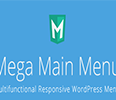Building a Personal Blog: Tips for Creating and Sharing Your Content

Getting into something that you have never done before can be exciting…it also can and usually does lead to more than a few ‘newbie’ mistakes that you, after gaining more experience, wish you’ve never made.
Welcome to the world of personal blogging, where you can let your creativity run wild and express yourself freely. In today's digital era, having a personal blog is more than just a hobby; it's a way to connect with people who share your interests, share your thoughts, and even make some money along the way. If you've been thinking about starting your own blog but don't know where to begin, you're in the right place. This comprehensive guide will walk you through the essential steps to create a successful personal blog, from choosing the right platform to making money from your content.
Importance of Personal Blogs
In a world dominated by social media, personal blogs offer a unique space for authentic self-expression. Unlike social media posts that disappear quickly, blogs provide a permanent home for your thoughts, ideas, and stories. Your blog becomes an extension of your personality and allows you to dive deep into topics that matter to you. It's a platform where you have full control over your content, design, and brand. Moreover, personal blogs can help you build a strong online presence and establish yourself as an expert in your field. By consistently sharing valuable content and engaging with your audience, you can create a loyal following and attract opportunities for collaboration, guest posting, and even making money. Additionally, if you want to save time and enhance your blog's quality without the hassle of writing it yourself, you may consider exploring options to buy blog articles. So, if you've been thinking about starting a personal blog, now is the perfect time to take the leap!
Choosing the Right Blogging Platform
1. Evaluating Different Blogging Platforms
Before you dive into the exciting world of blogging, you need to choose a platform that suits your goals and technical abilities. With so many options available, it can be overwhelming to make the right choice. Let's take a closer look at some popular blogging platforms and what they offer:
- WordPress.org: The heavyweight champion of the blogging world, WordPress.org offers endless flexibility, customization options, and scalability. With its wide range of themes, plugins, and community support, WordPress.org empowers bloggers of all skill levels to create professional-looking websites.
- Blogger: Owned by Google, Blogger is a user-friendly platform perfect for beginners. It requires minimal setup, allowing you to focus on creating content rather than dealing with technical details. However, it may lack the customization options and scalability of other platforms.
- Medium: If you're mainly interested in sharing your ideas without the hassle of maintaining a full website, Medium might be the perfect platform for you. It's a popular choice among writers and thought leaders, offering a sleek and minimalist interface.
2. Factors to Consider in Platform Selection
When choosing a blogging platform, consider factors such as ease of use, customization options, scalability, cost, and your specific blog needs. Are you planning to create a simple personal blog or a more complex website with advanced features? Do you have any technical skills or are you willing to learn? Thinking about these factors will help you make an informed decision that aligns with your blogging goals.
Defining Your Blog's Niche
1. Identifying Your Passion and Expertise
To create a successful personal blog, it's important to define your niche – the specific topic or theme that your content will revolve around. Start by identifying your passions, hobbies, and areas of expertise. What subjects excite you and make you eager to share your knowledge? By choosing a niche that aligns with your interests, you'll find it easier to stay motivated and consistently produce engaging content.
2. Identifying Your Passion and Expertise
While it may be tempting to appeal to a broad audience, narrowing down your target audience can actually help you attract more dedicated readers. Ask yourself: Who would benefit the most from my content? Who am I trying to connect with? By defining your target audience – whether it's tech-savvy young adults, aspiring chefs, or travel enthusiasts – you can tailor your content to their needs, preferences, and challenges.
3. Benefits of Niche Blogging
Niche blogging offers a range of benefits, such as establishing your expertise, attracting a loyal following, and standing out from the crowd. When you focus on a specific niche, you position yourself as a go-to resource for that particular subject. This not only builds credibility but also makes it easier to connect with like-minded individuals who share your passion. So, don't be afraid to narrow down your focus and embrace the power of specialization.
Creating Engaging Content
Understanding Your Target Audience
Planning and Organizing Your Content
Writing High-Quality Blog Posts
Incorporating Visuals and Multimedia
Using SEO Techniques to Improve Visibility
To create compelling content, you need to have a deep understanding of what your target audience desires, challenges, and finds interesting. What are they searching for? What problems are they trying to solve? Conduct thorough research, engage with your audience through comments and surveys, and listen to their feedback. This valuable insight will guide you in crafting content that resonates with your readers, keeps them coming back for more, and encourages them to share your blog with others.
Just like a chef needs a recipe to create a delicious dish, a blogger needs a plan to produce high-quality content. Before you start writing, take the time to brainstorm ideas, outline your posts, and create a content calendar. This organized approach will help you stay on track, maintain a consistent publishing schedule, and ensure that your content aligns with your overall blogging goals.
Writing captivating blog posts requires a mix of storytelling, creativity, and valuable information. To make your content stand out, use attention-grabbing headlines, compelling introductions, and engaging storytelling techniques. Break down complex topics into easy-to-understand paragraphs, and sprinkle your writing with anecdotes and examples to make it relatable and enjoyable to read.
In a visually-driven online world, adding images, videos, and other multimedia elements to your blog posts is crucial. Visuals not only break up the text and make your content more visually appealing but also help convey information more effectively. Whether it's infographics, videos, or eye-catching featured images, choose visuals that enhance your message and captivate your audience.
While creating high-quality content is important, optimizing your blog for search engines is equally crucial. Search engine optimization (SEO) techniques can help your blog rank higher in search engine results, driving more organic traffic to your site. Incorporate relevant keywords into your blog posts, use descriptive meta tags and alt text for images, and build high-quality backlinks to increase your blog's visibility and authority.
Designing Your Blog
Choosing a Suitable Theme or Template
Customizing the Layout and Design Elements
Optimizing for Mobile Devices
Enhancing User Experience and Navigation
The design of your blog plays a big role in grabbing your audience's attention and creating a pleasant user experience. When choosing a theme or template, consider factors such as aesthetics, functionality, responsiveness, and ease of customization. Select a design that reflects your blog's personality and aligns with your niche.
Once you've chosen a theme, take the time to customize it to match your unique style. Add your logo, choose an attractive color palette, and customize fonts and typography to create a consistent brand identity. Pay attention to the layout, making sure your content is easy to read, and optimize for fast page loading times to keep your audience engaged.
In an increasingly mobile world, optimizing your blog for mobile devices is essential. Make sure your chosen theme or template is responsive, meaning it adapts seamlessly to different screen sizes. Test your blog on various devices to ensure a smooth and enjoyable user experience across all platforms.
Providing a great user experience (UX) and easy navigation on your blog is important in keeping visitors engaged and encouraging them to explore more. Ensure your blog has clear navigation menus, allowing visitors to find information easily. Include suggestions for related posts and a search bar to improve usability. Regularly review and optimize your blog's navigation to provide a seamless browsing experience for your audience.
Promoting and Growing Your Blog
1. Leveraging Social Media Platforms
Social media platforms are powerful tools for promoting your blog and connecting with your target audience. Identify the platforms where your audience spends the most time and create engaging profiles. Share your blog posts, interact with your followers, and join relevant communities or groups to expand your reach. Use eye-catching visuals, engaging captions, and compelling calls-to-action to encourage social sharing and drive traffic back to your blog.
2. Engaging with Your Audience
Building a community around your blog is crucial for long-term success. Take the time to respond to comments, answer questions, and engage with your readers on social media. Foster a sense of connection and belonging, making your audience feel valued and appreciated. Encourage discussion, ask questions, and create opportunities for your audience to share their thoughts and experiences.
3. Collaborating with Other Bloggers
Collaborating with fellow bloggers in your niche can have a significant impact on your blog's growth. Seek opportunities for guest posting, podcast interviews, or joint projects that allow you to tap into each other's audiences. Collaborations not only expose your blog to new readers but also help you build relationships with influencers and establish yourself as a respected member of the blogging community.

















